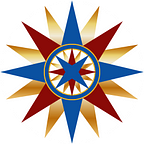My Approach to Learning Kanji While Travelling in Japan
Starting with 71 easy-to-read placenames
First time visitors to Japan are immediately confronted with an uncomfortable truth: it’s not easy to get around when you can’t read kanji.
I remember the shock of first contact all too well. Upon arrival at Narita Airport, as I was walking through the concourse (even before reaching Immigration and Customs) I spotted a lighted yellow sign with the characters 出口. Ah, I know what that means, it’s the exit. After walking halfway down the stairs, towards closed double doors, I hesitated. Why isn’t anyone else going this way? . . . Oops, that’s an emergency exit leading straight onto the tarmac!
I don’t suppose too many others have made that mistake. But getting confused by directional signs that are meant to be helpful is not at all uncommon.
In former times, I would be told to count the train stations and to get off “at the 9th stop”, or some such thing. Later on, I would be slightly more savvy and look out the window each time the train slowed down, straining to catch a glimpse of the station name, written in romaji at the bottom of the station’s signboard.
More recently, train stations are identified with a letter and number — for example, M17 Tokyo, M16 Ginza, M15 Kasumigaseki —…
